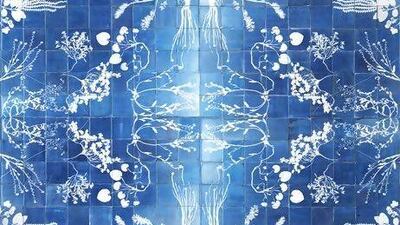Thermochromic technology has been around since the 1980s and has been used for its fair share of gimmicks. Colour changing spoons are a prime example. But now, designers are using the technology to create exciting new products for the home.
Together with "smart" materials that react to stimuli such as light, electricity, touch and changes in temperature, 21st-century thermochromic technology is quietly leading to life-changing innovations. Take the new range of porcelain tiles from the UK-based company Eco Friendly Tiles, which break down nitrogen dioxide in the air, purify it and then replace it with oxygen when they are exposed to light. The tiles tirelessly repeat the process without a single noticeable change in appearance.
Safe electrically conductive paint from Bare Conductive is also among the most cutting-edge developments, acting like a wire for lighting. It can even be used to control a mains relay such as a light switch.
Photochromic, or light-reacting, compositions are also being used. The designer Solenne Morigeaud has created a photochromic floor that reveals hidden elements in vivid colour palettes when exposed to ultraviolet light. Her Hide-and-Seek with the Missing floor aims to highlight the extinction threat of many floral species and to inform users of the importance of preserving nature. Meanwhile, the London-based studio Glithero (www.glithero.com) has created the light-sensitive Blueware range. Vases and tiles are laced with intricate floral designs that are exposed in white when ultraviolet light turns the coating royal blue.
Because thermochromic technology reacts to low heat, it is easy to use and is being incorporated into a variety of products with exciting possibilities. Linger a Little Longer from the designer Jay Watson is a seating system coated in a black thermochromic pigment that turns temporary interactions into lingering visual memories. Touching the surfaces with a warm hand or hot object such as a serving dish reveals the wood grain beneath. It's a wonderful conversation piece.
Colour changing pigments have also helped create the Columbia Road wallcovering collection by Custhom. Hidden images reveal themselves when the temperature rises, and fade away again when it cools. It's a stylish way to make users aware of heat energy wasted by household appliances, hot water pipes and wall lights.
Anthony Hughes is a trend spotter at Scarlet Opus. For more information visit www.trendsblog.co.uk or twitter.com/scarletopus

